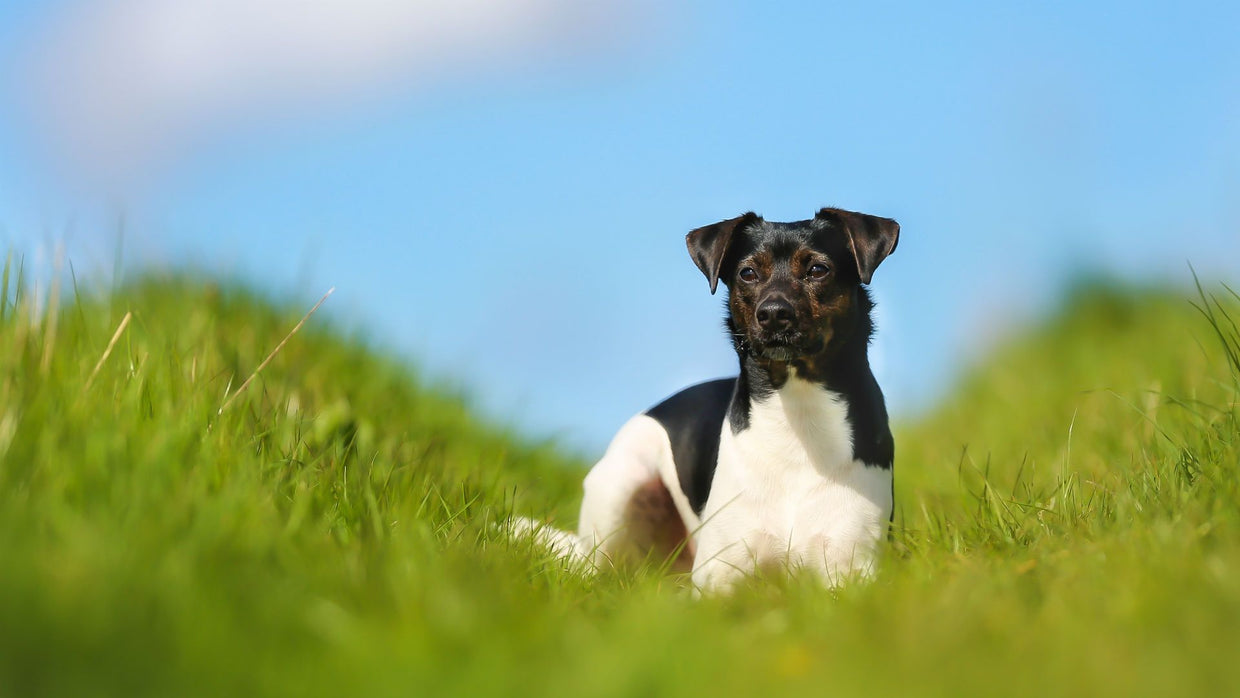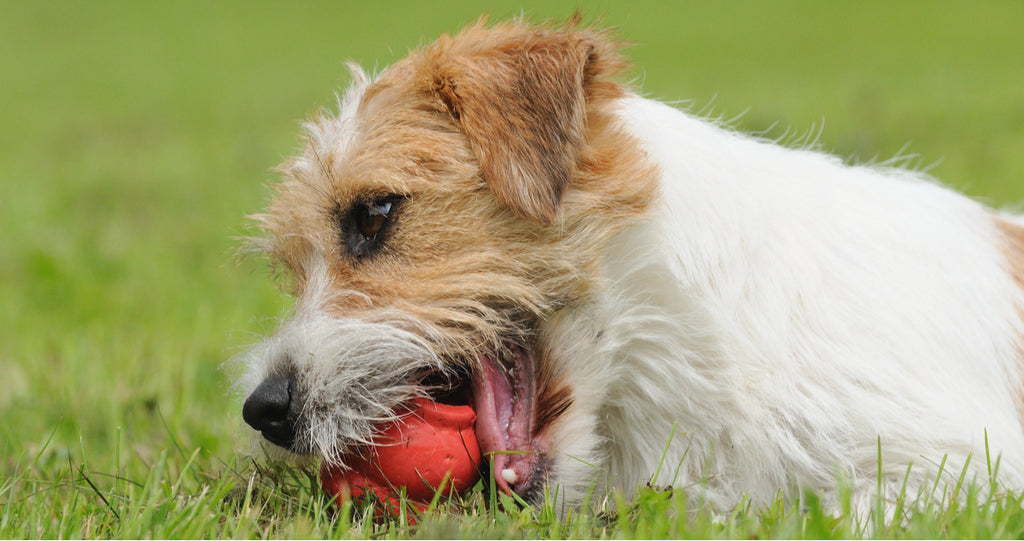

Separation anxiety in dogs
What is separation anxiety in dogs?
Separation anxiety in dogs refers to a range of behaviours that may occur when dogs become unsettled after being apart from their owners. Some dogs may find it difficult to be left home alone, while others might show signs of concern even when their human family is just in another room. Supporting dogs’ mental health can be an important step in helping your canine companion feel more at ease.
Signs that your dog is may be experiencing separation anxiety:
- Accidents around the house
- Barking, howling, and/or whining
- Destructive behaviours, like chewing or digging
- Pacing and attempting to escape – some dogs may even damage doors and windows.
Other less common (and easy to miss) signs include:
- Trembling
- Panting
- Repetitive behaviour (circling, pacing, barking)
Signs of separation anxiety in dogs at night
- Pacing or restlessness when you leave the room
- Whining, barking or howling after bedtime
- Scratching at bedroom doors or trying to get into your bed
- Difficulty settling or repeated waking during the night
- Clingy behaviour leading up to bedtime
While any of the above signs could suggest separation anxiety, they might also be linked to other concerns. It’s a good idea to check in with your vet, just to rule out anything else.
Why do some dogs struggle when left home alone?
Past experiences, individual temperament and genetic makeup can all play a role in how your dog responds to being left alone. Just like people, dogs are individuals – so the underlying cause of their anxiety can vary, and often needs to be approached in a way that suits their specific needs.
Are dogs prone to separation anxiety?
Dog separation anxiety can develop at any stage of life. Younger dogs may struggle as they learn to cope with time alone, while older dogs can become more dependent as their senses – like sight, hearing or smell – naturally change. Rescue dogs may also be more likely to show signs of anxiety, particularly if they've experienced changes in routine or environment.
While separation anxiety dog signs can affect any breed or age, getting into good routines early on is one of the most effective approaches for how to prevent separation anxiety in dogs later in life.
How common is separation anxiety and related behaviour in dogs?
Scientific surveys suggest that more than 30% of UK pet dogs show clear signs of concern when left home alone* (see the bullet points above for examples). However, not all signs are obvious. Some dogs may simply appear unsettled, display anxious body language or quietly look for their owner.
These subtler behaviours can be easy to miss, so it’s often hard to tell how your dog is coping unless you record them while you're out. Some experts believe that up to 80% of dogs may be quietly finding alone time challenging.

Does my dog have separation anxiety – or another type of behaviour?
Damage or destructive behaviour is sometimes misunderstood as a pet being badly behaved, but this isn’t the case. If your dog behaves unexpectedly when left home alone, try not to punish them – their actions may be a sign that they’re feeling unsettled or overwhelmed.
How to recognise signs of separation anxiety in your dog
It’s a good idea to speak to your vet or a qualified behaviourist. They can help rule out other behavioural concerns and offer guidance if there are any underlying health-related factors. Once separation anxiety in dogs is identified, they can provide helpful advice on how can you support a dog with separation anxiety and build their confidence when home alone.
Can separation anxiety improve over time?
With the right support, many dogs can become more settled when left home alone. A vet or qualified behaviourist can help create a tailored plan for your dog, which might include:
How to support a dog or puppy with separation anxiety
There’s no one-size-fits-all approach, but many vets and behaviourists suggest gentle techniques for treating separation anxiety in dogs, especially when the signs are mild. These techniques can be particularly helpful for puppy separation anxiety, where early support can make a real difference.
If you're wondering how to stop separation anxiety in dogs or how to stop dog crying when left alone, small steps – like changing pre-departure cues or adding calming enrichment – can help your dog gradually feel more relaxed.
- Stuffed Kongs – These durable rubber toys can be filled with something tasty like dog-friendly peanut butter (make sure it’s free from xylitol, which is toxic to dogs) or banana. You can also stuff them with wet dog food and freeze them to make the fun last longer.
- Plenty of walkies – A good walk or a run around the garden can help burn off energy and leave your dog more relaxed and ready to rest while you’re out.
- Brain games – Mental stimulation can be just as tiring as physical exercise. A short clicker training session before you leave can help your dog settle more easily.

Helping your dog or puppy feel more at ease when home alone
To help your puppy get used to being home alone and feel more at ease with alone time from an early age, it’s important to start building positive routines early on. Our in-house YuMOVE vet, Dr Charlotte, shares some simple tips to help your pup feel more settled:
- Start small – leave your puppy alone for just a few minutes at a time, then gradually build up.
- Keep departures low-key – avoid long goodbyes so your pup doesn’t associate them with stress.
- Create a calm space – set up a cosy area with toys or a food puzzle to help them settle.
- Stick to a routine – regular feeding, playtime and rest can help your puppy feel more secure.
- Reward calm behaviour – praise your pup when they stay relaxed, even if you just pop out of the room.
And if you're ever unsure, your vet or a qualified behaviourist can offer advice tailored to your pup.
Support for dogs and puppies showing stronger signs of separation anxiety
If you're dealing with a case of severe separation anxiety in dogs, or you're concerned about an extreme separation anxiety dog, it's essential to work alongside a vet or certified behaviourist. They’ll guide you through a carefully managed plan for how to cope with separation anxiety in dogs, using gradual exposure techniques tailored to your dog's specific triggers.
Remember, if your dog is showing signs of separation anxiety, they’re not being ‘naughty’ – they may simply be feeling unsure or overwhelmed. Like us, dogs need patience, consistency and reassurance to feel more secure. With the right support, you can help them grow in confidence and feel more relaxed at home.
Have you noticed your dog showing signs of separation anxiety? Do you have any helpful tips to share with fellow dog owners? We'd love to hear from you – leave a comment below or join the conversation with our pet-loving community on Facebook and Instagram.



